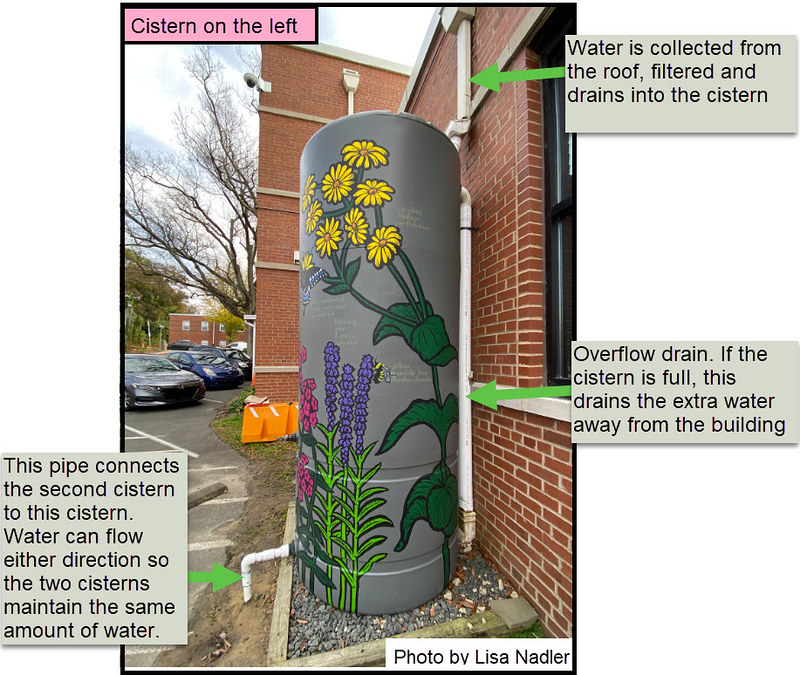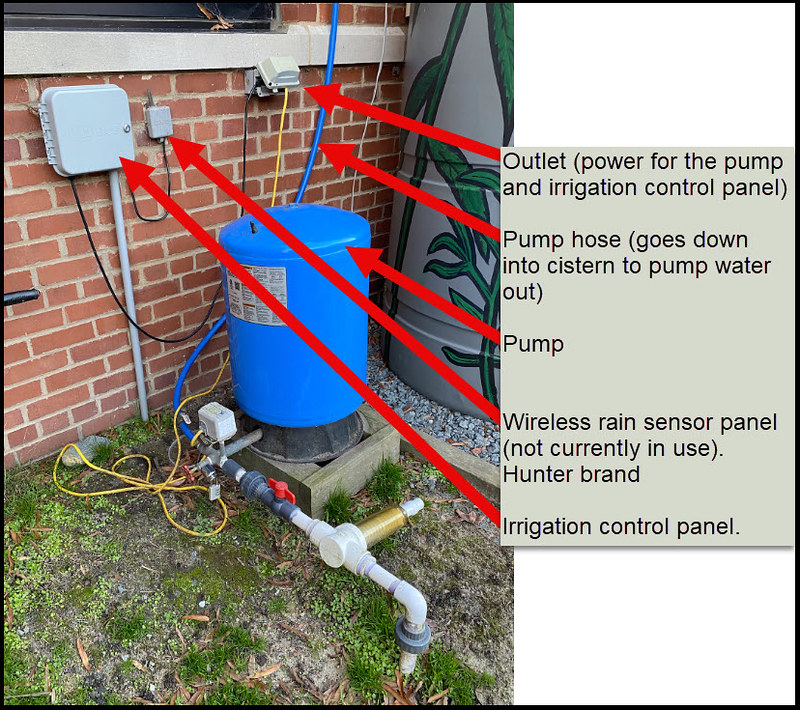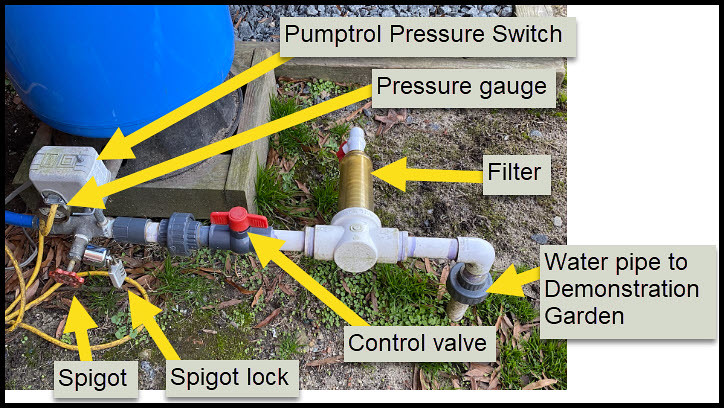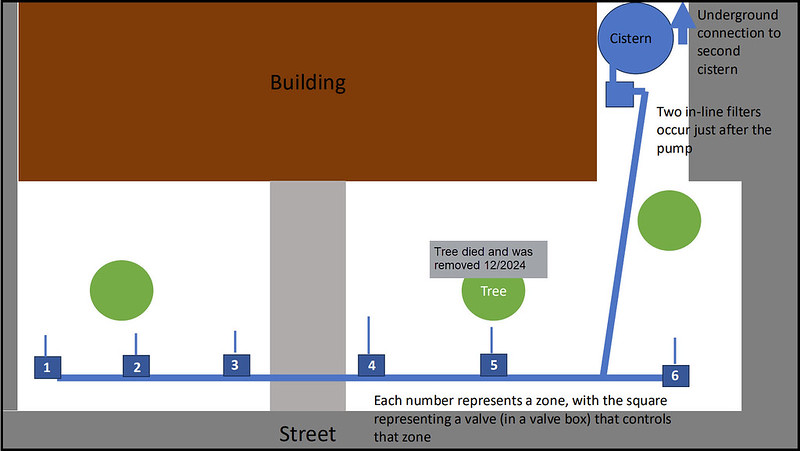Cisterns and the Demonstration Garden Irrigation System
go.ncsu.edu/readext?1058860
en Español / em Português
El inglés es el idioma de control de esta página. En la medida en que haya algún conflicto entre la traducción al inglés y la traducción, el inglés prevalece.
Al hacer clic en el enlace de traducción se activa un servicio de traducción gratuito para convertir la página al español. Al igual que con cualquier traducción por Internet, la conversión no es sensible al contexto y puede que no traduzca el texto en su significado original. NC State Extension no garantiza la exactitud del texto traducido. Por favor, tenga en cuenta que algunas aplicaciones y/o servicios pueden no funcionar como se espera cuando se traducen.
Português
Inglês é o idioma de controle desta página. Na medida que haja algum conflito entre o texto original em Inglês e a tradução, o Inglês prevalece.
Ao clicar no link de tradução, um serviço gratuito de tradução será ativado para converter a página para o Português. Como em qualquer tradução pela internet, a conversão não é sensivel ao contexto e pode não ocorrer a tradução para o significado orginal. O serviço de Extensão da Carolina do Norte (NC State Extension) não garante a exatidão do texto traduzido. Por favor, observe que algumas funções ou serviços podem não funcionar como esperado após a tradução.
English
English is the controlling language of this page. To the extent there is any conflict between the English text and the translation, English controls.
Clicking on the translation link activates a free translation service to convert the page to Spanish. As with any Internet translation, the conversion is not context-sensitive and may not translate the text to its original meaning. NC State Extension does not guarantee the accuracy of the translated text. Please note that some applications and/or services may not function as expected when translated.
Collapse ▲The first cistern (the one on the left as you face the building) was installed in 2008 to supply water to the Demonstration Garden. Water was pumped to the garden using above ground hoses and water was supplied to the garden soaker hoses with diverters. However, this only supplied enough water for one side of the garden. The other side was watered using a locked faucet which came from the building’s water supply. This set up required supervision intermittently for two to three hours at a time. During the summer drought season, enthusiasm for this task waned just as the water need increased. In addition, the soaker hoses continuously sprung leaks and had to be regularly repaired or replaced.
In 2018, Mike Dupree, the Agribusiness & Environmental Services Manager with the Durham County Soil & Water Conservation District, consulted to help design and install a new system. Using soil and percolation (soil perfusion) testing, Mr. Dupree calculated how much water would be required in each garden zone, based on a standard 1 inch per week. Based on his calculations, it was determined that the addition of the second cistern should provide adequate water for the entire garden. The Master Gardener class of 2019 donated this second cistern (on the right as you face the building) to provide the additional water to the garden. The goal was to collect adequate water so that, except in unusual circumstances, no city water would be needed. The two cisterns are connected underground by PVC piping. Mr. Dupree taught a group of Master Gardeners about irrigation tubing, and the number of emitters per foot required, how the tubing was connected, capped off, and laid out. A new pump was purchased and the valve boxes were set up. The electrical box provided various programs for timing each zone and all of the electrical connections were waterproofed. Finally, a rain sensor was added to prevent unnecessary watering.
In 2022, the Master Gardeners contracted with Rigo Rodriguez from Falling Rain Irrigation to maintain the system and install all of the drip lines in the six beds.
Water is collected from the roof of the building and stored in these cisterns. From the cisterns, water flows into a pump which provides the necessary pressure to move the water through the entire setup.
The pump pushes the water through a series of filters that remove sediment and debris, ensuring that only clean water enters the pipes and tubing system, a crucial element in preventing clogging in the smaller components such as the drip lines.
Once filtered, the water enters the main supply line, which acts as a large pipeline carrying water to the next stage. At the end of the main line, the water reaches a valve, a distribution hub that divides the water into separate zones.
Each zone is controlled by a set of zone valves, which direct water flow to specific areas of the garden. These valves can be manual or automated, allowing flexibility in watering schedules or prioritization of certain sections.
From the primary and zone valves, water flows into drip lines connected to each of the six garden beds. The drip lines are designed to release water slowly and directly to the plant roots, ensuring efficient water use and minimal waste. The system can be programmed to select how many days per week to water and for what length of time.
There are six zone valves that correspond with the six garden beds starting from the south side of the garden.
- Zone/Garden Bed 1 – Left Sunny Bed
- Zone/Garden Bed 2 – Right Sunny Bed
- Zone/Garden Bed 3 – Left Center Bed
- Zone/Garden Bed 4 – Right Center Bed
- Zone/Garden Bed 5 – Left Shady Bed
- Zone/Garden Bed 6 – Right Shady Bed
Overall, the system is designed to deliver water consistently and efficiently, using automation and controls to manage the flow across the garden beds. It’s an eco-friendly and effective way to irrigate the garden while conserving resources. In very wet times, the cisterns may be completely full. An overflow system that drains excess water away from the building and the cisterns is in place. In very dry periods, the cisterns may be completely empty and hand watering from the city water system must be done.
Components in the box and lines next to the left cistern include:
- Cisterns: Store water to supply the system.
- Pump: Moves water from cisterns to the system.
- Filters: Remove debris to protect the drip lines.
- Main Line: Distributes water from the pump to the manifold.
- Valve: Splits the water into different zones or garden beds.
- Zone Valves: Control water flow to specific garden beds.
- Drip Lines: Deliver water to each garden bed.
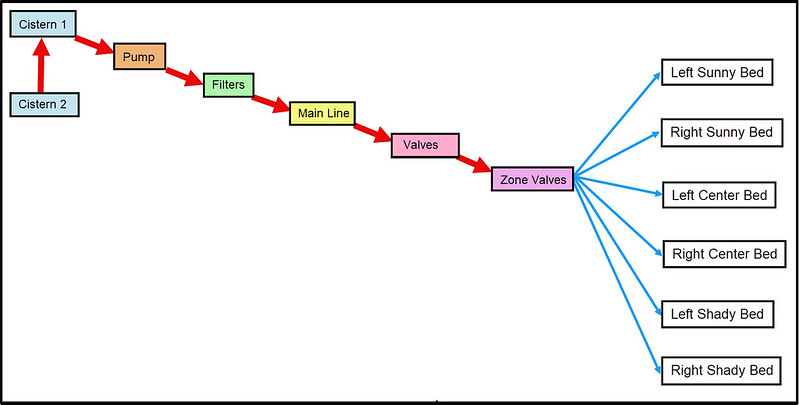
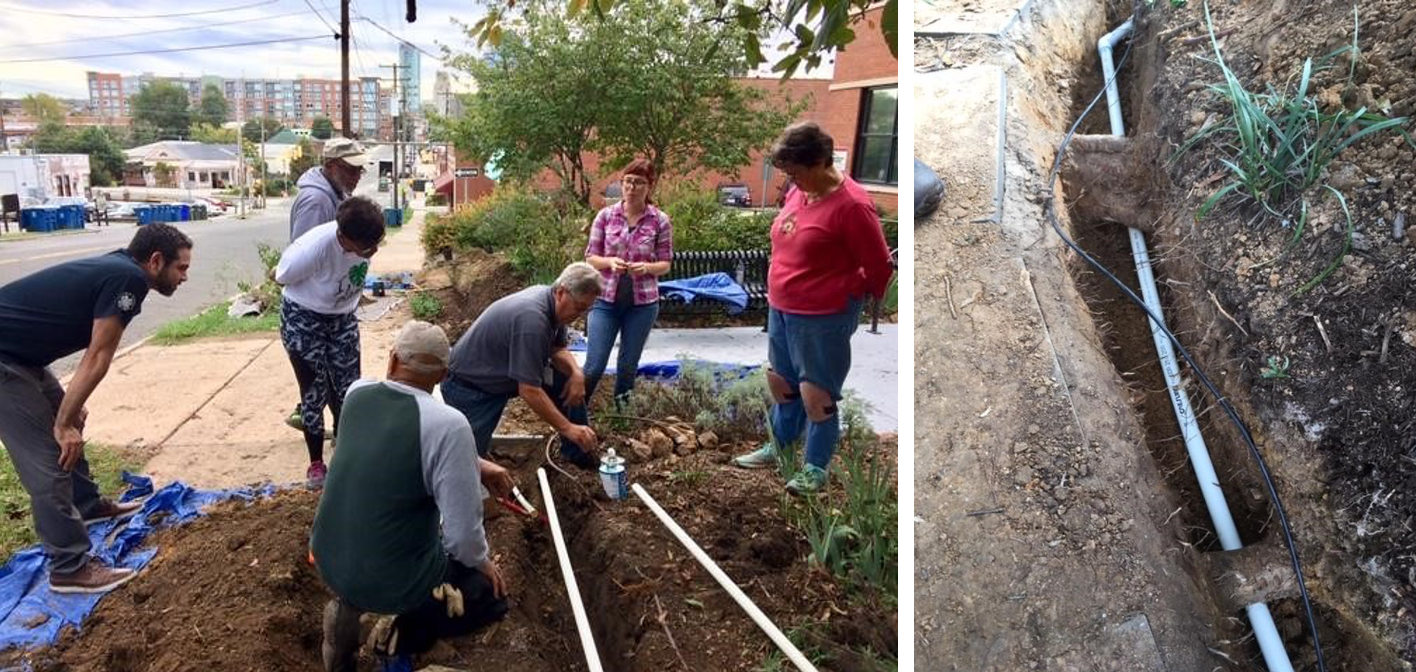
Trenching and installation of the irrigation lines in the Demonstration Garden.





